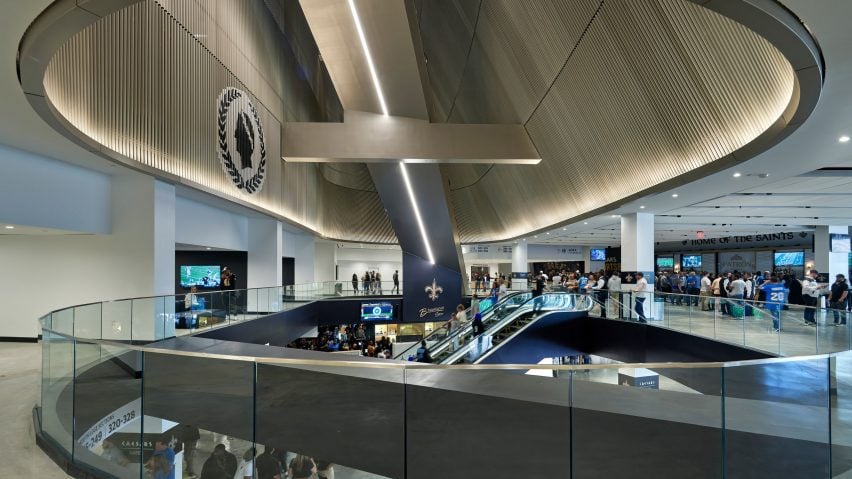
Trahan Architects restores Superdome to be "microcosm" of New Orleans
Local studio Trahan Architects has finished an interior renovation of the Caesars Superdome in New Orleans, completing a series of renovations launched after Hurricane Katrina that it claims will extend the stadium's life by 25 years.
Trahan Architects' work on the interior is the latest upgrade since the studio was engaged on the Superdome restoration in 2005, after it was damaged by Hurricane Katrina. The building sheltered as many as 20,000 thousand people fleeing the storm.
The Superdome was originally completed in 1975 by Curtis and Davis Associated and featured a dome and concave cylindrical facade clad with aluminium panels.
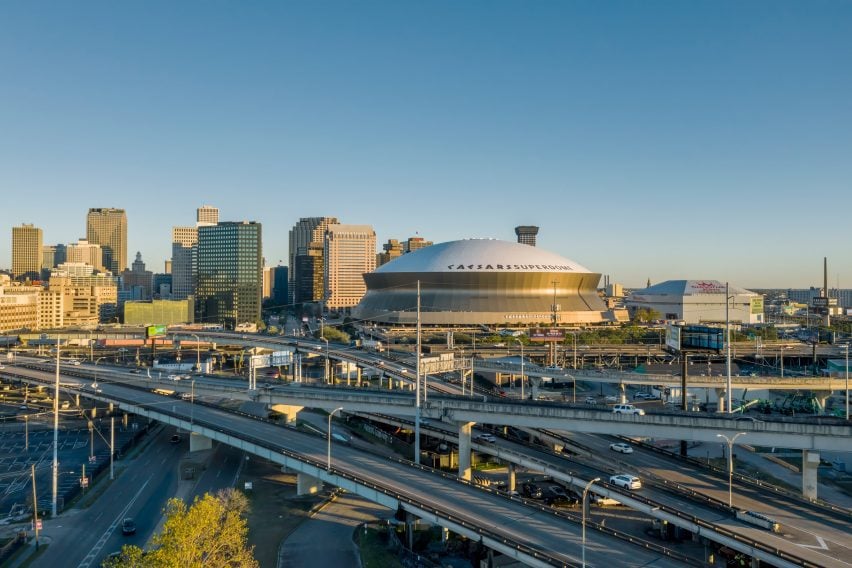
After Hurricane Katrina, Trahan Architects implemented an overhaul of the exterior, replacing all the panels with a rainscreen system made from anodized aluminium metal panels.
The current phase of the renovation, which was completed in time for its first game of the NFL season, included the removal of the ramp circulation system on the concourse.
This allowed for concessions to be pushed to the outside of the structure, as well as for the installation of atriums in the entry programs and for lounges to be installed.
In total, the renovation opened up more than 100,000 square feet (9,290 square metres), according to the studio.
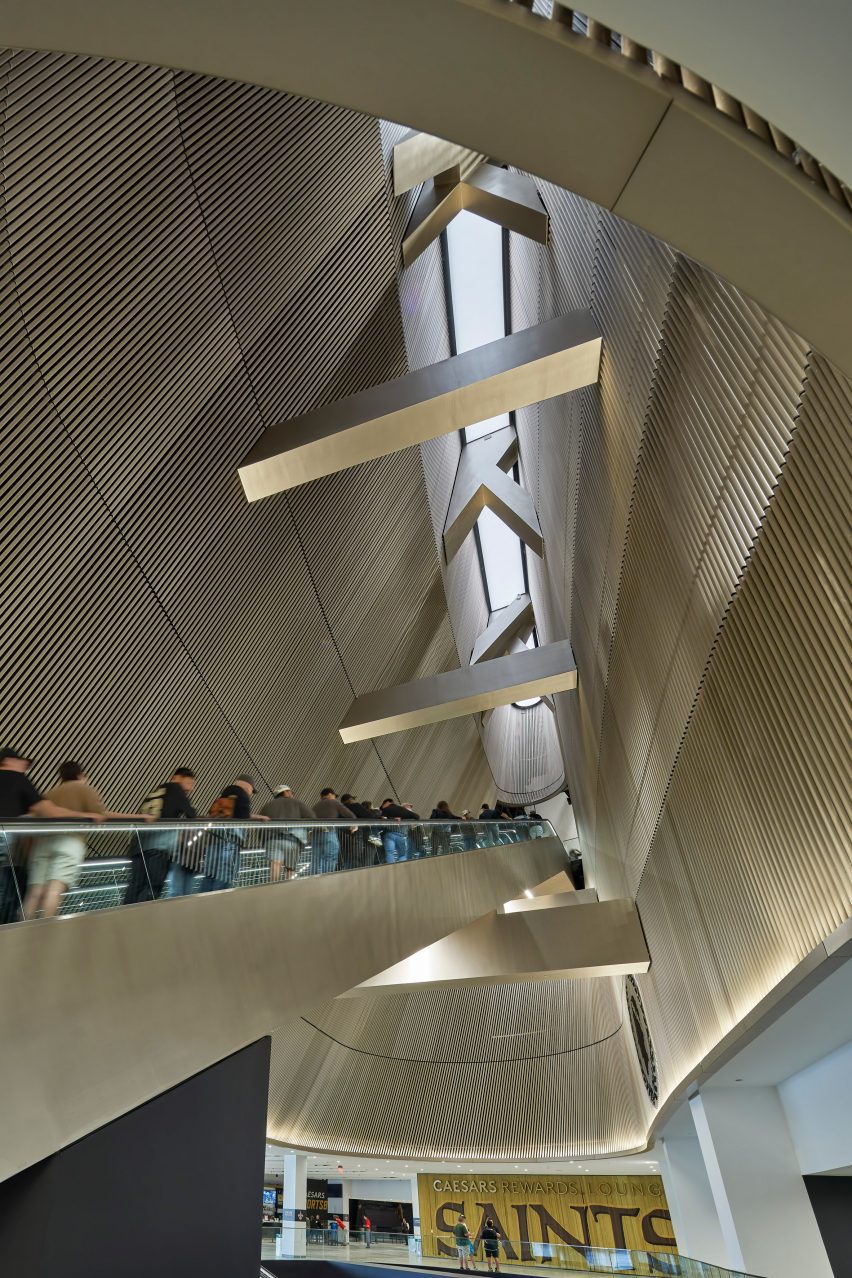
The removal of the ramps allowed for more shared spaces and circulation, according to the studio, which modelled the concessions and circulation on the community-oriented streetscapes of New Orleans.
"With this interior overhaul, we wanted the building to feel like a microcosm of our city," Trahan Architects founding principal Trey Trahan told Dezeen.
"We thought of the design as a series of stacked neighborhoods or 'faubourgs' as we call them, all connected by generous circulation spaces that served them – aka 'the street'."
Also important to the renovation was bringing the materiality used for the original facade inside.
Both Trahan and studio partner Brad McWhirter told Dezeen that the original innovativeness of Superdome, structurally and materially, was important throughout the redesign process.
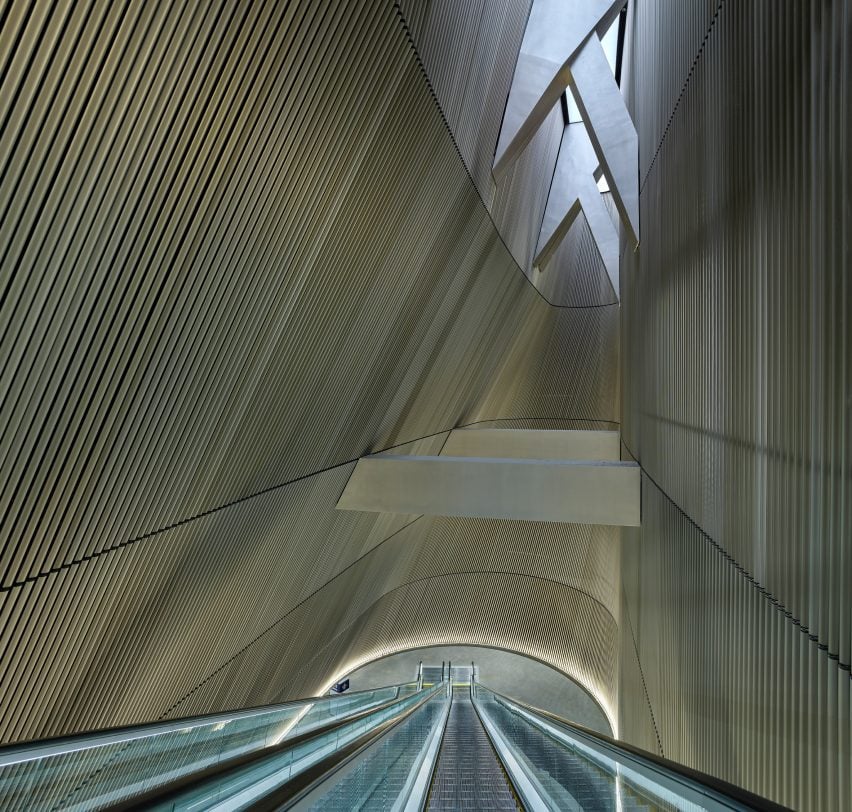
"The rich material language they worked with, having the exterior skin of anodized aluminum which ages beautifully over time, along with its elegant form, made us see it as a sculpture that needed to be expressed both inside and out," said McWhirter.
"Before, you never got to experience the shape of the building from the interior – they were treated as two completely separate elements."
This move is most obvious in the atriums placed at three corners of the structure, which are the most visually apparent interventions.
Here, express elevators move up through the voids. The voids have walls clad with anodized aluminium rods and are crossed by thick metal-clad beams that reveal the structure.
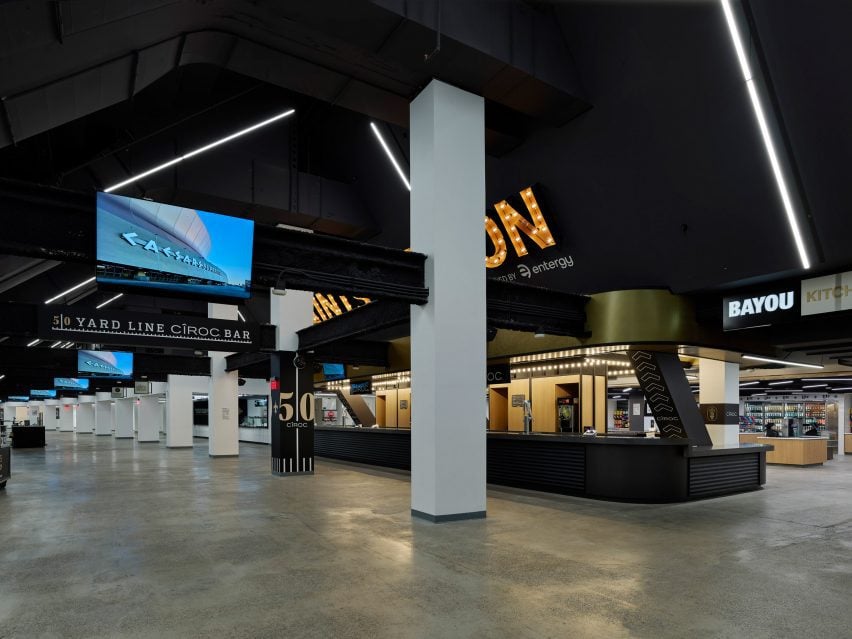
Planning for resiliency and bringing the structure to compliance with codes around ventilation and accessibility were also important in the redesign process.
Trahan Architects worked with engineering firm Thornton Tomasetti to ensure the building could stand up to high winds – it was during this 3D modelling process that the voids covered by the circulation ramps were discovered, which led to their removal.
"You would walk up the ramps from floor to floor with an eight-foot (2.4 metre) ceiling height, to small, cramped concourses until you finally got to your seat for some relief," said Trahan.
"With the model, we could see the full breadth of the voids and wasted space that could be more useful for the public, building operations, and for incorporating new mechanical systems."
These processes all happened while keeping the stadium in use for the American football season. The studio also had to install accessible decks for movement-impaired people, all while making sure that new mechanical systems did not interfere too much with the aesthetic of the exterior.
"This, and from a design standpoint, implementing universal accessibility within a 50-year-old building was very difficult. We had to make up for a lot of lost time to bring the building up to today's standards and go the extra mile to prepare for the future," added Trahan.
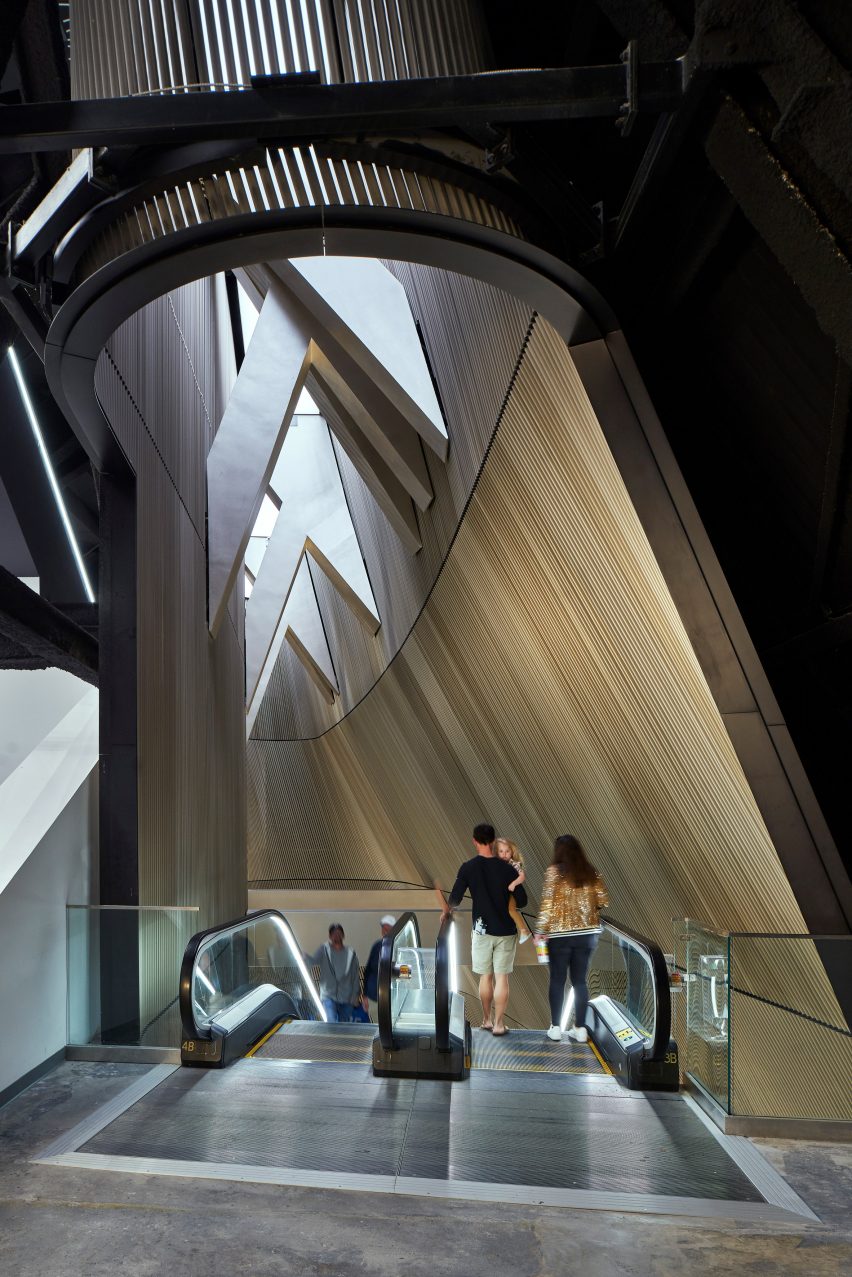
These future-looking improvements included the aforementioned facade replacement and the inclusion of new emergency generators, as the loss of power during Hurricane Katrina created harsh conditions for those sheltering inside.
The architects also lauded some of the original features of the structure, which were maintained.
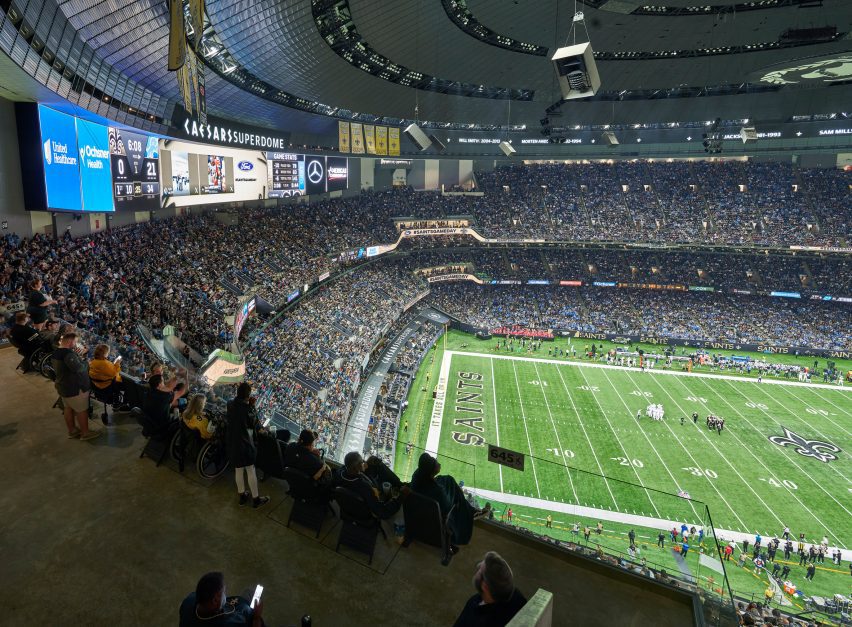
"For instance, the 'gutter tubs' of the roof, hidden behind the lip of the facade at the top, manage stormwater such that draining a 10-acre roof doesn't overload the city's system," said McWhirter.
"This continues to work very well to this day – even with the incredible amount of development that's occurred since the building first opened."
According to the studio, the total of the renovations since 2005 will drastically extend the lifespan of the stadium.
"This comprehensive renovation is expected to extend the building's lifespan by 25 years, allowing future generations to enjoy the same sense of community and excitement the New Orleans landmark has fostered for nearly half a century," it said.
Other restorations of iconic buildings include Foster + Partners' interior overhaul of the Transamerica Pyramid skyscraper in San Francisco.
Meanwhile, natural disasters worsened by climate change continue to be an impetus to design buildings better. In light of that, Dezeen launched a series last year called Designing for Disaster to highlight the different problems and solutions architects and designers face in the face of extreme weather events.
The photography is by Tim Hursley.